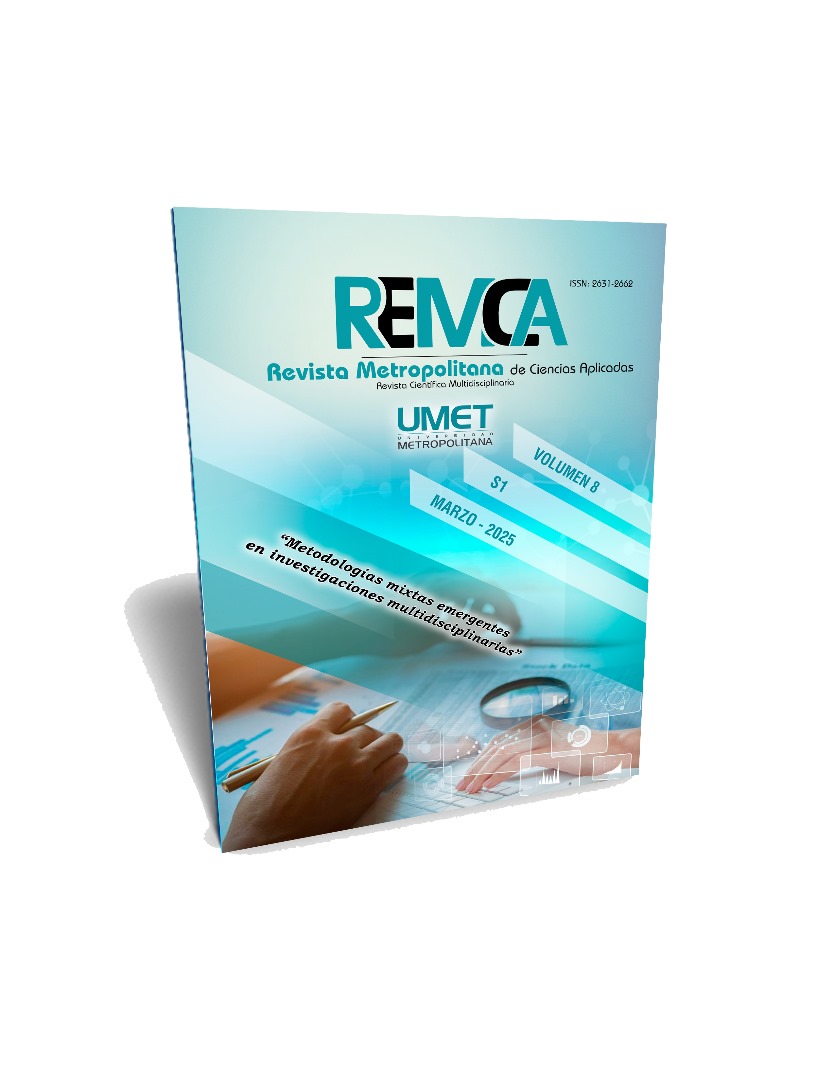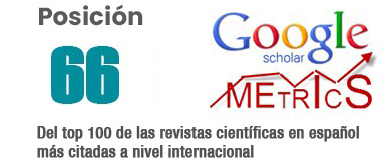Prevalencia y variabilidad de los conductos en C en segundos molares inferiores: un análisis sistemático
DOI:
https://doi.org/10.62452/mpf87022Palavras-chave:
Variaciones anatómicas, conductos en C, terapia endodónticaResumo
La revisión sistemática aborda la configuración interna de los segundos molares inferiores, centrándose en la complejidad de los conductos en forma de C. La búsqueda inicial se realizó en PubMed y SciELO en 2023, y posteriormente se realizó una búsqueda sistemática en enero de 2024, limitando los resultados a publicaciones desde 2019. De los 120 artículos obtenidos, 95 fueron considerados adecuados tras eliminar duplicados y aplicar criterios de inclusión y exclusión. Finalmente, cinco artículos cumplieron con los requisitos para la revisión. Los resultados destacan que la configuración más frecuente en los segundos molares inferiores es la presencia de dos raíces y entre uno y tres conductos por raíz. La prevalencia de una tercera raíz es inferior al 5,5%. La forma en C de los conductos es una variante anatómica significativa, atribuida a una falla en la fusión de la Vaina Epitelial de Hertwig durante el desarrollo dental. Estudios revisados, como el de Castillo Córdova et al. (2024), evidencian que el 65,5% de los segundos molares inferiores presentan conductos en C, siendo más común en mujeres. La tomografía computarizada de haz cónico ha sido fundamental para mejorar la identificación de estas variaciones anatómicas, permitiendo un diagnóstico más preciso y facilitando la planificación de tratamientos endodónticos. La revisión concluye que el conocimiento detallado de la anatomía radicular interna es esencial para el éxito en la terapia endodóntica. Se recomienda realizar estudios adicionales para explorar posibles factores genéticos y ampliar la comprensión de la variabilidad anatómica en otras piezas dentales.
Downloads
Referências
Abdalrahman, K., Talabani, R., Kazzaz, S., & Babarasul, D. (2022). Assessment of C-shaped canal morphology in mandibular and maxillary second molars in an Iraqi subpopulation using cone-beam computed tomography. Scanning, 2022. https://doi.org/10.1155/2022/4886993
Cano López, S., & Palacio Espinosa, E. (2021). Variaciones de la configuración radicular en premolares y molares mediante la tomografía computarizada: Revisión sistemática de literatura. (Tesis de pregrado). Universidad de Cartagena.
Castillo Córdova, R. V., León Ruidías, N. A., Espinoza Salcedo, A. R., & Herrera-Plasencia, P. M. (2024). Prevalencia de conductos en C de segundos molares mandibulares evaluados en tomografía de haz cónico. Revista Cubana de Estomatología, 61(1). https://scielo.sld.cu/scielo.php?script=sci_arttext&pid=S0034-75072024000100002
Chaintiou Piorno, R., Consoli Lizzi, E. P., Gualtieri, A. F., & Rodríguez, P. A. (2022). C-shaped canal system in maxillary molars evaluated by cone-beam computed tomography in an Argentine subpopulation. Acta Odontológica Latinoamericana, 35(3), 164–170. https://doi.org/10.54589/aol.35/3/164
Chaintiou Piorno, R., Consoli Lizzi, E. P., Lenarduzzi, A., & Rodríguez, P. A. (2021). Reto de la Endodoncia: Conducto en “C”. Revista de la Facultad de Odontología de la Universidad de Buenos Aires, 33(74), 5-9. https://revista.odontologia.uba.ar/index.php/rfouba/article/view/2
Duman, S. B., Duman, S., Bayrakdar, I. S., Yasa, Y., & Gumussoy, I. (2020). Evaluation of radix entomolaris in mandibular first and second molars using cone-beam computed tomography and review of the literature. Oral Radiology, 36(4), 320–326. https://doi.org/10.1007/s11282-019-00406-0
Fan, B., Cheung, G. S., Fan, M., Gutmann, J. L., & Bian, Z. (2004a). C-shaped canal system in mandibular second molars: Part I--Anatomical features. Journal of endodontics, 30(12), 899–903. https://doi.org/10.1097/01.don.0000136207.12204.e4
Fan, B., Cheung, G., Fan, M.W., Gutmann, L., & Fan, W. (2004b). C-Shaped Canal System in Mandibular Second Molars: Part II—Radiographic Features”. Journal of Endodontics, 30(12), 904-908. https://www.sciencedirect.com/science/article/abs/pii/S0099239905600738
Granda, G., Caballero, S., & Agurto, A. (2017). Estudio de la anatomía de raíces y conductos radiculares en segundas molares permanentes mandibulares, mediante tomografía computadorizada de haz cónico en población peruana. Odontología Vital, 1(26), 5-12. https://revistas.ulatina.ac.cr/index.php/odontologiavital/article/view/217/214
Mejía Agüero, S. H. (2020). Prevalencia de radix entomolaris en primeros molares inferiores permanentes y conductos en forma de “C” en segundos molares inferiores permanentes por medio de la tomografía computarizada de haz cónico en el Centro de Diagnóstico por Imágenes El Galeno en Tacna - Perú, 2017. (Trabajo académico de Segunda Especialidad en Carielogía y Endodoncia). Universidad Privada de Tacna.
Morantes Peña, P., Barba Ramírez, L., Donoso Martínez, F., & Hidalgo Rivas, A. (2024). Estrategias de optimización en exámenes con tomografía computarizada de haz cónico en ortodoncia: Revisión narrativa. Avances en Odontoestomatología, 40(2), 63–77. https://scielo.isciii.es/pdf/odonto/v40n2/0213-1285-odonto-40-2-63.pdf
Moreno, F., & Moreno, S. (2016). Patrón cuspídeo de molares inferiores. Revisión de la literatura. Revista Estomatología, 24(1), 33-39. https://docs.bvsalud.org/biblioref/2018/01/878642/5-moreno-patron-cuspideo-molares.pdf
Pérez Solis, L. F., & Reinoso Toledo, E. P. (2023). Revisión bibliográfica narrativa sobre la complejidad de la anatomía interna de los conductos radiculares. Salud, Ciencia y Tecnología, 3, 640. https://www.researchgate.net/publication/380110079
Pérez Torres, D. F., et al. (2023). Variaciones anatómicas en segundos molares inferiores en población residente en Bucaramanga y Medellín evaluadas mediante CBCT (Trabajo de grado para optar el título de Odontólogo). Universidad Santo Tomás.
Samaniego Rivera, G. A. (2023). Anatomía interna de molares mandibulares mediante tomografía de haz cónico computarizado (Tesis de grado). Universidad Católica de Cuenca.
Tachibana, H., & Matsumoto, K. (1990). Applicability of X-ray computerized tomography in endodontics. Endodontics & Dental Traumatology, 6(1), 16–20. https://doi.org/10.1111/j.1600-9657.1990.tb00381.x
Torres Peña, A. (2020). Sistemas de canales en C en el segundo molar inferior. (Tesis de grado). Universidad Nacional de Cuyo.
Downloads
Publicado
Edição
Seção
Licença
Copyright (c) 2025 María Belén Muñoz-Padilla, Camila Alejandra Villafuerte-Moya, Verónica Alicia Vega-Martínez (Autor/a)

Este trabalho está licenciado sob uma licença Creative Commons Attribution-NonCommercial-ShareAlike 4.0 International License.
Os autores que publicam na Revista Metropolitana de Ciencias Aplicadas (REMCA), concordam com os seguintes termos:
1. Direitos autorais
Os autores mantêm direitos autorais irrestritos sobre suas obras. Os autores concedem ao periódico o direito de primeira publicação. Para tal, cedem à revista, em caráter não exclusivo, direitos de exploração (reprodução, distribuição, comunicação pública e transformação). Os autores podem firmar acordos adicionais para a distribuição não exclusiva da versão publicada do trabalho no periódico, desde que haja reconhecimento de sua publicação inicial nesta revista.
© Os autores.
2. Licença
Os trabalhos são publicados na revista sob a licença Creative Commons Atribuição-NãoComercial-CompartilhaIgual 4.0 Internacional (CC BY-NC-SA 4.0). Os termos podem ser encontrados em: https://creativecommons.org/licenses/by-nc-sa/4.0/deed.pt
Esta licença permite:
- Compartilhar: copiar e redistribuir o material em qualquer meio ou formato.
- Adaptar: remixar, transformar e desenvolver o material.
Nos seguintes termos:
- Atribuição: Você deve dar o crédito apropriado, fornecer um link para a licença e indicar se alguma alteração foi feita. Você pode fazer isso de qualquer maneira razoável, mas não de uma forma que sugira que o licenciante endossa ou patrocina seu uso.
- Não comercial: você não pode usar o material para fins comerciais.
- Compartilhamento pela mesma licença: se você remixar, transformar ou criar a partir do material, deverá distribuir sua criação sob a mesma licença do trabalho original.
Não há restrições adicionais. Você não pode aplicar termos legais ou medidas tecnológicas que restrinjam legalmente outros de fazerem qualquer coisa que a licença permita.




